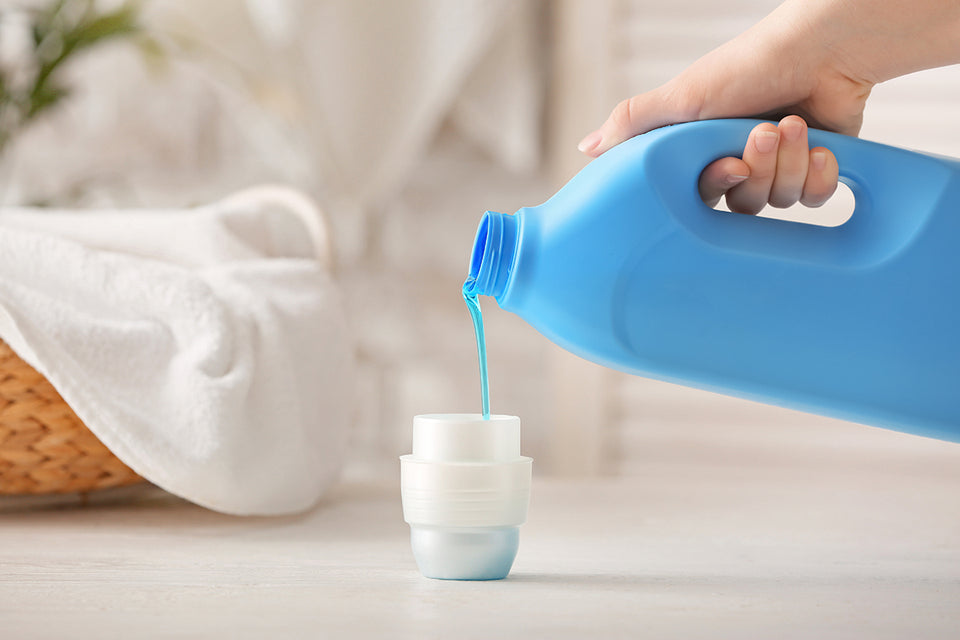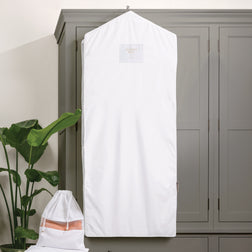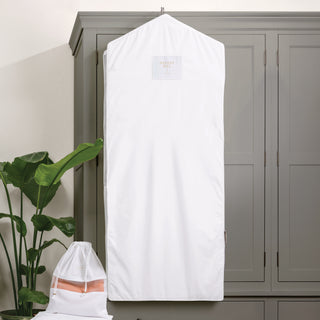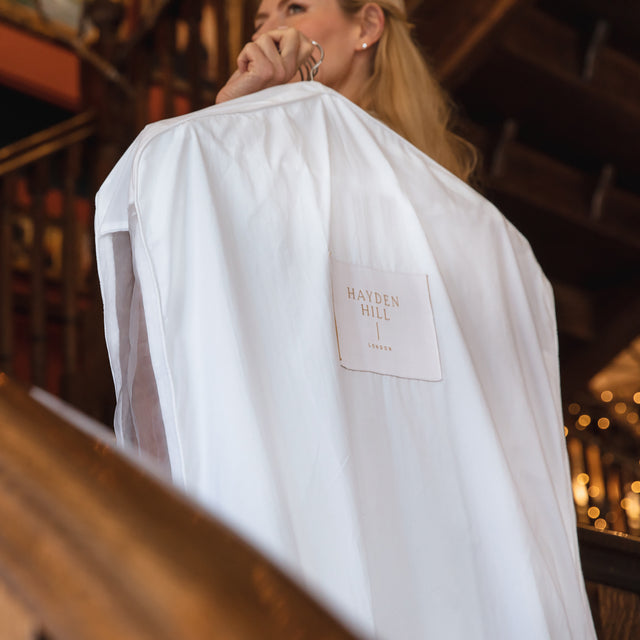Knowing how to wash your clothes without a washer is an excellent skill to have and it might come in handy in a number of situations. You'll need to know how to get your clothes clean and fresh without a washer.
Washing clothing is a common household chore that usually requires the use of a washing machine.
However, there may be times when you don't have access to a washer or prefer gentler ways of washing your clothing, in which case you'll need to know how to get your clothes clean and fresh without a washer.
First, Sort Your Clothes
You must sort your dirty laundry into categories of clothes, just as you would if you were going to use a washing machine. There are some clothes you wouldn’t want to wash with others. For example, you would never wash delicate items with jeans.
Separate your clothing into categories: whites, colored clothing, and delicate items. If you wish, you may segment the clothes even further by fabric type. Read the laundry symbols on delicate fabrics like wool, lace, and silk and follow the guidelines for water temperature, laundry detergent types and quantities, and drying procedures.
Choosing the Best Laundry Detergent
Choosing the appropriate laundry detergent is essential to ensure a garment is cleaned thoroughly and properly. The most important factor to consider is the type of fabric you're washing. Delicate materials, such as silk or wool, require a milder detergent than more durable fabrics, such as cotton or denim.
Also, inspect the garment carefully for stains. Certain stains require special treatment, and some detergents are designed to target specific stains or eliminate odors.
Another thing to keep in mind is whether any members of your family have sensitive skin or allergies. To avoid triggering skin allergies, use a hypoallergenic or fragrance-free detergent.
Types of Detergents
Liquid Detergent - Because of the variety of options and convenience of use, liquid detergents are a popular choice for hand-washing garments. Because they are liquid, they are easy to measure and dissolve in water. Liquid detergents are gentle on fabrics and remove dirt and stains effectively. They are especially appropriate for delicate fabrics that require a gentler washing method. When using liquid detergents, be sure to follow the dilution and usage recommendations on the container.
Delicate Fabric Detergents - A detergent made specifically for delicate fabrics should be used for hand-washing materials such as silk, lace, or cashmere. These detergents are designed to be gentle on delicate fabrics, reducing damage and color fading. They are often made with gentler ingredients and free of harsh chemicals, making them ideal for maintaining the quality and condition of delicate clothing.
Wool Detergents - A wool detergent is best for washing woolen items such as sweaters. Wool detergents are made to clean and maintain wool fibers while preventing shrinkage and felting. Gentle cleaning chemicals are used to successfully remove dirt and odor from woolen items. Wool detergents also include lanolin or other conditioning ingredients that help keep wool garments soft and smooth.

All-Purpose Detergent - When you don't have access to special detergents, hand-washing clothes with an all-purpose laundry detergent is an acceptable option. All-purpose detergents are flexible and can clean a wide range of materials.
However, it is critical to examine the detergent label for any instructions or limitations. Some all-purpose detergents may be too harsh for hand-washing delicate materials, or they may need to be diluted with more water.
How to Wash Clothes Without a Washer
Washing clothes without a washing machine is not extremely difficult or time-consuming. It just takes a little know-how and planning. You may also be surprised to discover that hand-washing your clothing results in cleaner garments.
Using a washing machine is the most common way to clean clothes mainly because we prioritize saving time above quality. Hand-washing is actually more effective at cleaning dirty clothes than machine washing which just swirls clothes around in detergent, especially when it comes to washing delicate fabrics.
Reasons to Hand Wash Clothes
Knowing how to wash your clothes without a washer is an excellent skill to have and it might come in handy in a number of situations:
- When your washing machine is broken
- If you don’t have a washer and dryer and you don't want to use a laundromat
- If there is a power outage
- If you are looking for ways to conserve water
- If you are traveling
3 Ways to Wash Your Clothes Without a Washing Machine
Hand-Wash Clothes
Washing clothing by hand is by far the gentlest method. It enables you to handle your clothing with the utmost care during the washing process. To save time, wash like items together, i.e. items of the same color and fabric type.
Treat and remove stains.
Before washing an item, it’s important to inspect it closely for any stains, and if you find any, to remedy the stains as soon as possible. Fortunately, removing a stain from a garment you plan to hand wash is convenient because you can quickly treat the stain and wash the item at the same time.
To treat a stain, soak the garment in the stain-removing solution of your choosing for a couple of minutes. The more stubborn the stain, the longer you must soak it. Squeeze out the liquid once the stain has been removed. Scrubbing may be necessary for persistent stains, however, this depends on whether the fabric is durable enough to allow it.
Fill a basin with water.
Now that the stains have been removed, you may begin washing your garments. A basin is useful when hand-washing clothes, but if a basin or container is not available, you can use a sink or tub.
Fill the basin halfway with water. Keep in mind that the water level should be an inch or two above the garments. Your garments should be completely saturated with water.
Deciding whether to use hot or cold water depends on your clothes. Check the laundry symbols on each garment for this information. But most clothing is best laundered in cold water other than undergarments.
Add detergent and allow to soak.
After you've filled the basin with water, it’s time to add detergent. Depending on your preferences and the clothes that you're washing, you can use powder or liquid detergent. Mix the detergent and water well before adding clothes.
If you prefer powder detergent, make sure it's thoroughly dissolved. Add garments to the basin and submerge them in the solution. Allow them to soak for at least 20 minutes, and longer if the items are very dirty.
Move garments through the water, then rinse thoroughly.

Swish your garments around with your hands after soaking. This action is similar to how washing machines swirl clothing around throughout a cycle. After that, gently rub your durable clothing against itself to eliminate any dirt or dust that has gathered. Delicate fabrics should not be rubbed; simply let the water pass through them.
To avoid damaging or stretching your garments, avoid scrubbing or twisting the wet clothes, especially if they are delicate.
Next, it's time to rinse off the detergent. Fill the basin with clean water, soak the clothing, then gently squeeze to eliminate suds. Repeat this process again until no more suds remain. Alternatively, you can rinse items under running water to remove the detergent.
Remove excess water.
If your garments are able to endure wringing, gently twist them to remove extra water. This will speed up the drying process. For delicate clothes, lay them flat on a towel and roll up the towel to squeeze out excess water.
Lay your clothes out to dry. You may also line-dry them by placing them on a drying rack. To keep water from dripping on your floors, line-dry them outside.
Use a Mobile Washer
If there isn't a washing machine nearby and you don't want to wash everything by hand, you could use a mobile washer. If you're not familiar with a mobile washer, it's a low-cost appliance that looks like a plunger and can be used with a bucket to wash clothes.
The steps are quite similar to those of hand washing:
- Before washing garments, treat any stains you find, then fill a bucket with water and detergent. Remember that your garments should be completely submerged in the water. And make sure the detergent has been thoroughly mixed into the water.
- Place your garments in the bucket and allow them to soak. The amount of time you soak your garments depends on how dirty they are, but 20 minutes should be enough.
- Then use the mobile washer in the same way as you would a toilet plunger. Plunge with it on top of the garment. Move your mobile washer up and down for at least two minutes. This helps remove dirt from your clothes.
- After plunging is complete, rinse off the garment under running water. Drain the soapy water in the bucket and replace it with clean water. Put the garment back in the bucket and plunge the mobile washer up and down to eliminate soap suds. Repeat twice more, or until there is no more soap on your clothing.
- Remove the extra water from your garment as you would when handwashing it, then lay it flat or hang it to dry.
Using a Washboard

Most people used washboards to clean their clothing until the washing machine was invented in the early 1900s. (Though the company that still makes washboards saw demand skyrocket in the months after COVID-19 broke out.)
Washboards are boards that are constructed of wood and corrugated metal that provides a surface for scrubbing laundry. However, washboards are not suitable for all types of clothing as some materials can't tolerate the scrubbing.
If you would like to clean clothing with a washboard, follow these steps:
- Remove any stains from the garment before washing. There are a wide variety of stain removers on the market and sometimes simply soaking the garment helps to remove the stain.
- Locate a large basin that the washboard will fit in and fill the basin halfway with water.
- Add either powder or liquid detergent to the water and thoroughly mix the solution. Soak your garment in the basin for at least 20 minutes. If the garment is excessively dirty, the water may get dirty and need to be replaced.
- Hold the washboard in one hand, and rub the item of clothing against the washboard with the other hand. Repeat this process until all of your clothes have been thoroughly cleaned.
- Discard the soapy water in the basin and replace it with fresh water. Rinse the garment in the water, gently twisting it to remove suds.
- Remove excess water from the garment as you would if handwashing it, then lay it flat or hang it to dry.
FAQs
How do you wash clothes without a washer when traveling?
There are a couple of different methods to wash clothing when traveling if you don’t have access to a washing machine.
The most common method is hand-washing, in which you use a sink or basin to wash your clothes with water and detergent. Another option is to use a portable washing bag, which allows you to wash your clothing without a basin or sink. You can also research laundromats or laundry services in the region where you're staying to guarantee that your clothing is thoroughly and conveniently cleaned.
How do you wash dirty clothes by hand?
To wash dirty garments by hand, fill a basin or sink halfway with water. Add laundry detergent and mix to create a soapy solution. Put the dirty garments in the water and gently agitate them by rubbing and squeezing them to remove dirt and stains. Drain the soapy water and rinse the garments well under clean running water until the water runs clear. Squeeze extra water from the clothing gently, taking care not to wring or twist them too tightly.

Washing is just one component of caring for your clothing properly so they will last for years to come. How you store your clothing when not being worn regularly or when out of season is also vital. We recommend you store your favorite items in high-quality clothing storage bags. Hayden Hill short garment bags are made of 100% organic, soft cotton that is environmentally friendly and allows your favorite pieces to breathe while keeping them protected from damage.








